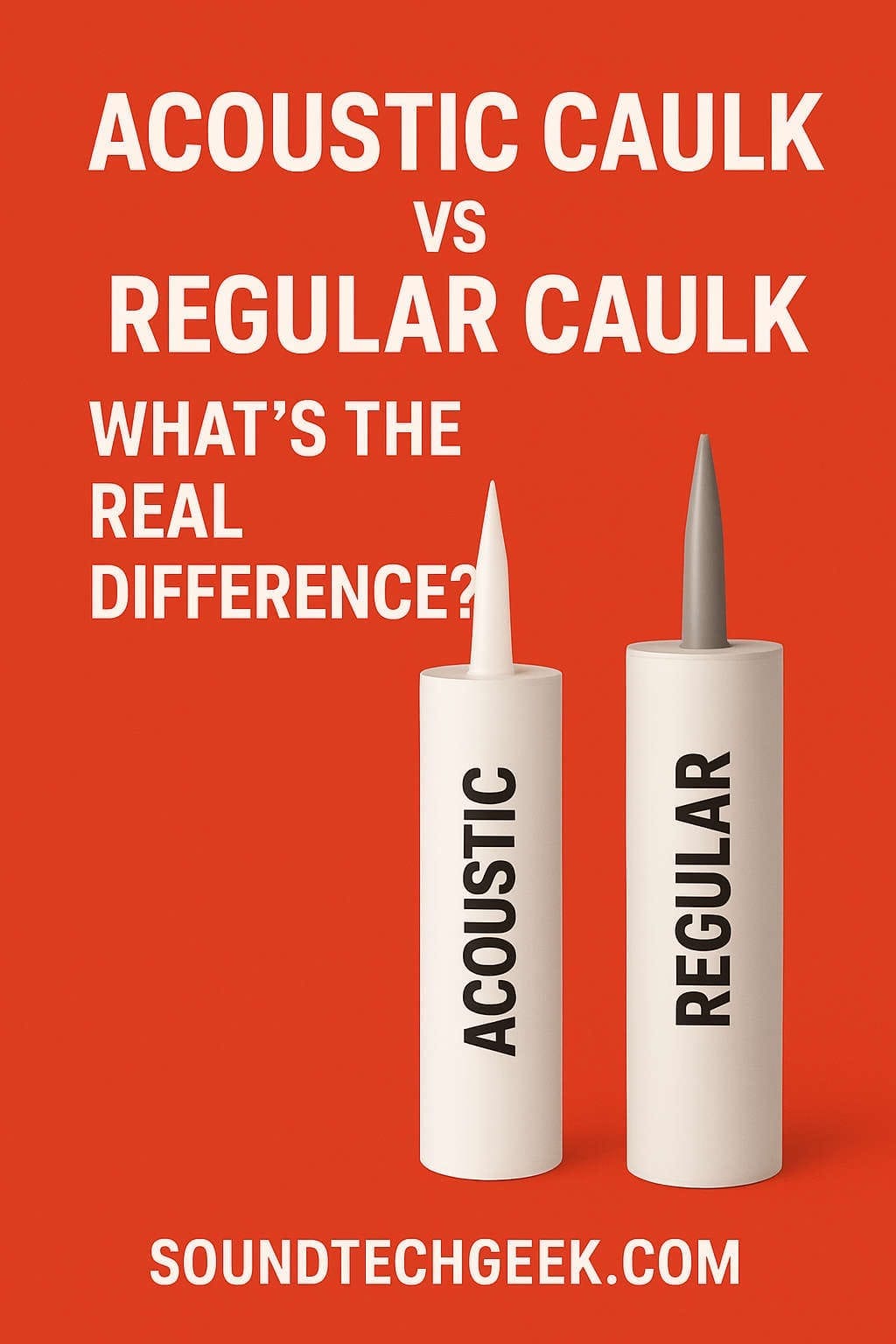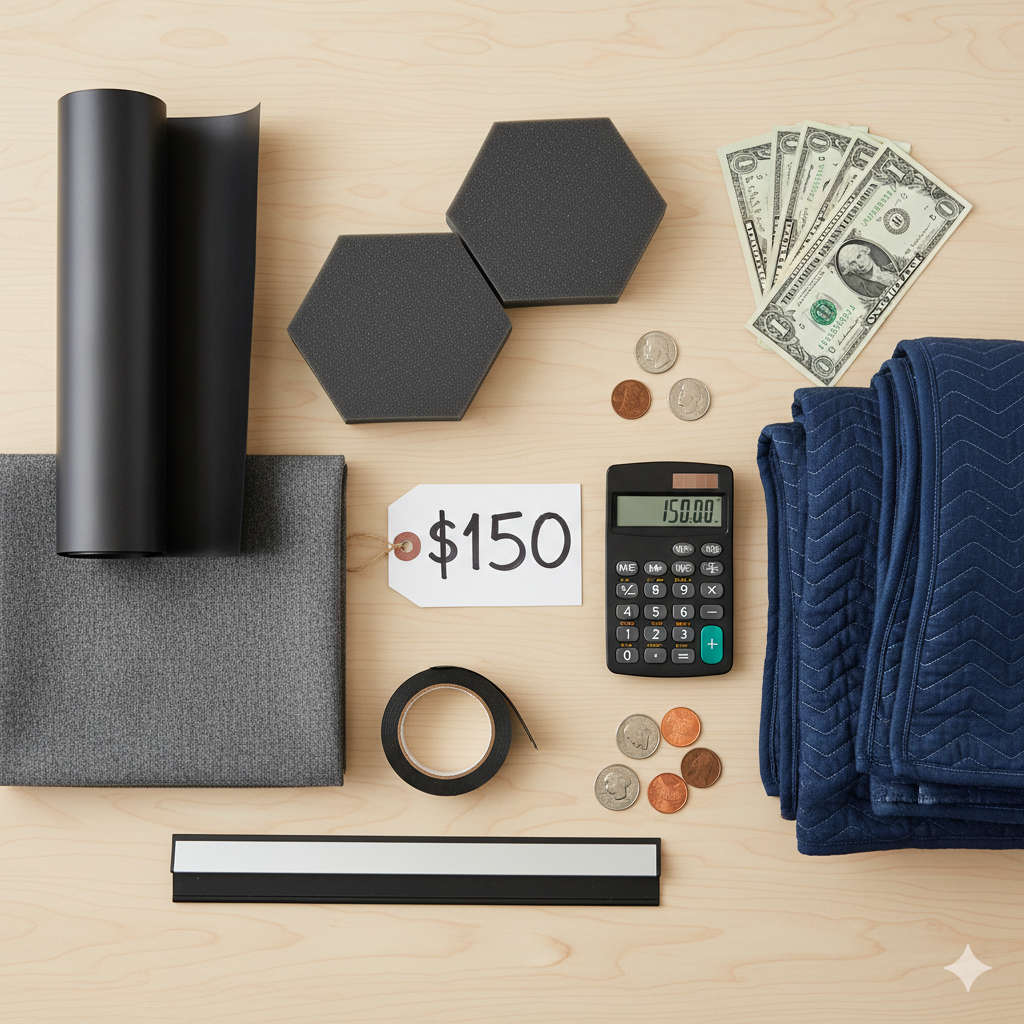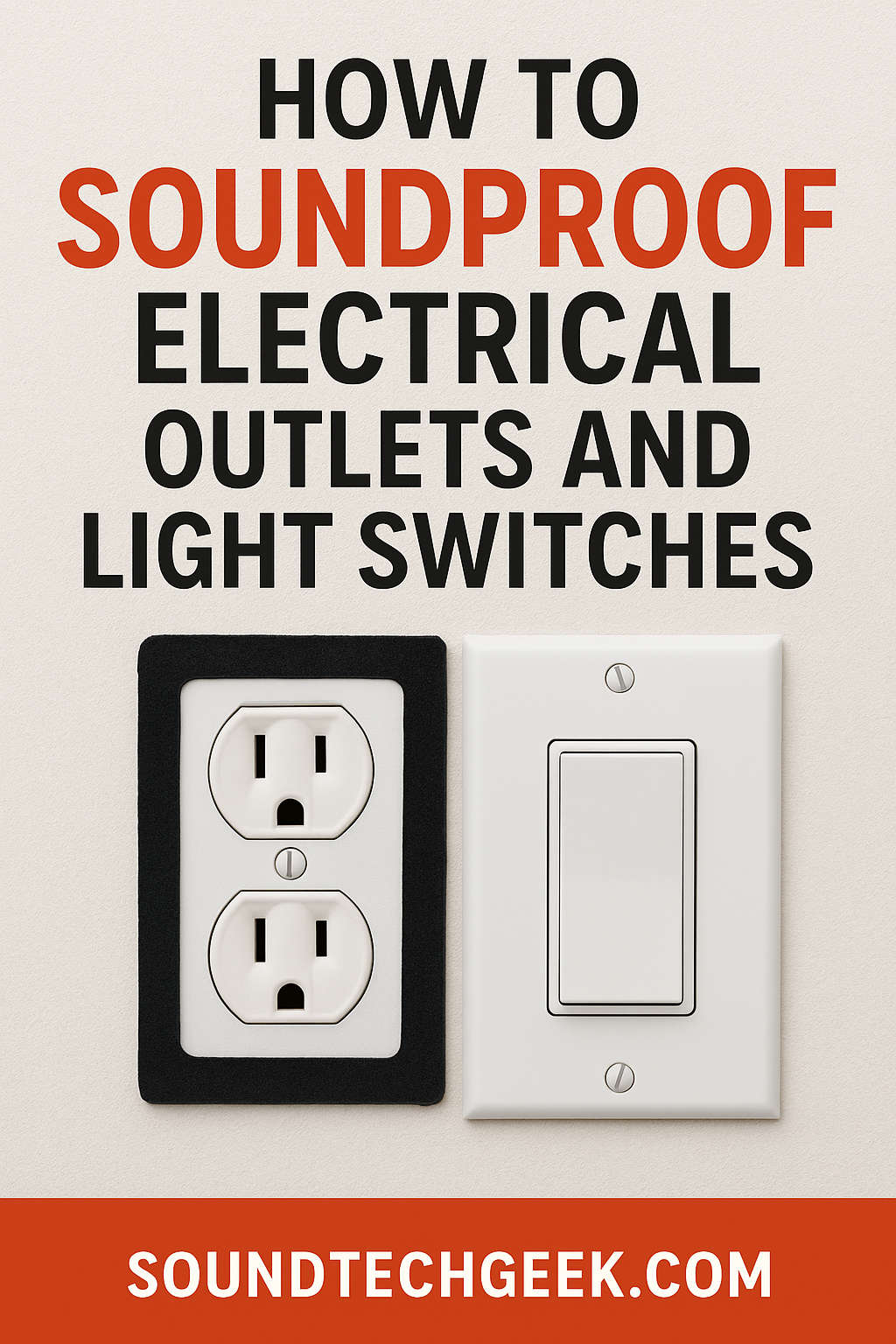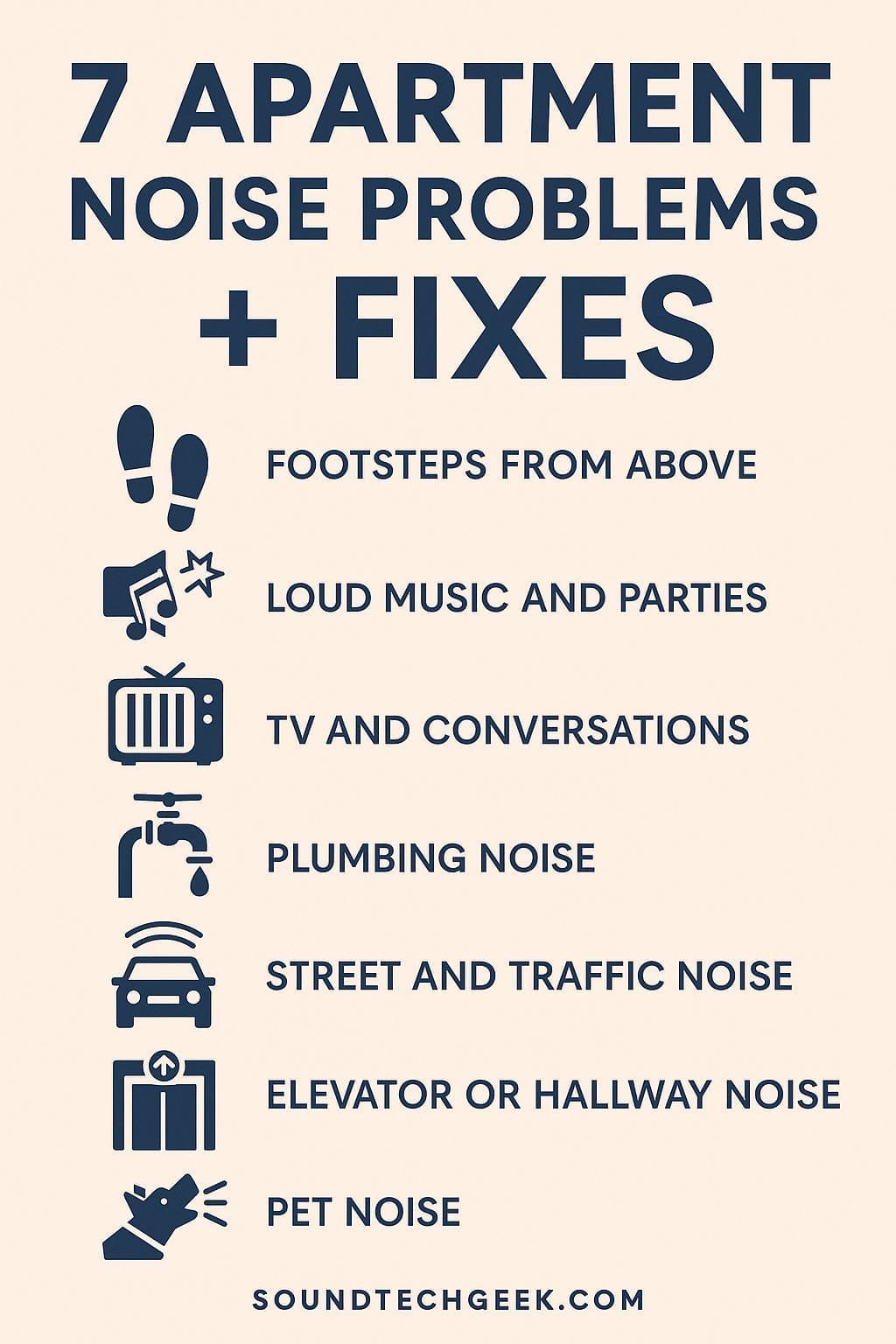If you’ve ever heard your neighbor’s TV through the wall, the muffled hum of conversation next door, or street noise slipping through window seams, you’ve experienced sound leakage. What most people don’t realize is that sound travels not only through walls and floors but also through the tiniest cracks and gaps in your home.
That’s where caulking comes into play. But here’s the catch: not all caulk is created equal. There’s a big difference between acoustic caulk (also known as acoustical sealant) and the regular caulk you might use for baseboards, bathtubs, or trim.
In this complete guide, we’ll walk you through what sets these two apart, when to use each, the best ways to apply them, and some top product recommendations to help you make the best soundproofing decisions for your home or studio.
Understanding the Basics: Why Sealing Gaps Matters for Soundproofing
Sound travels wherever air can move. Even a hairline crack around a window, electrical outlet, or baseboard can let noise leak through. If you’ve invested in insulation, double drywall, or acoustic panels, leaving those tiny gaps unsealed can undo much of your effort.
That’s why professionals consider sealing one of the final — and most important — steps of any soundproofing project. By using the right sealant in the right place, you can block air leaks, reduce vibrations, and improve your space’s Sound Transmission Class (STC) rating.
The question is, which type of caulk should you use: acoustic or regular?
What Is Regular Caulk?
Regular caulk is the go-to sealing material found in nearly every household toolbox. It’s primarily designed to seal joints and seams where air, moisture, or dust might enter — not necessarily to stop sound.
There are several types of regular caulk, each made for specific jobs:
1. Acrylic Latex Caulk
Acrylic or painter’s caulk is the most common type for indoor use. It’s water-based, easy to apply, paintable, and ideal for sealing trim, baseboards, and small gaps in drywall. However, it hardens after curing and can crack over time if the joint moves, which makes it less effective for sound control.
2. Silicone Caulk
Silicone caulk is flexible and extremely resistant to moisture, making it perfect for bathrooms, kitchens, and windows. It stays elastic and lasts for years, but it’s not paintable and isn’t formulated to absorb sound vibrations.
3. Polyurethane Caulk
Polyurethane caulk is a strong, weather-resistant option for outdoor use. It adheres well to wood, metal, and masonry, providing a tough seal that withstands movement and weather changes. But again, it’s not designed to minimize sound transmission.
Regular caulk can certainly help block air leaks and drafts, but it’s not built to absorb or dampen sound waves. For that, you need something specialized.
What Is Acoustic Caulk (Acoustical Sealant)?
Acoustic caulk, often referred to as acoustical sealant or soundproofing caulk, is specifically formulated to reduce noise transmission by sealing gaps and joints in walls, ceilings, and floors.
While it may look similar to regular caulk, its chemistry and performance are entirely different.
Key Characteristics of Acoustic Caulk
- Permanently Flexible:
Unlike typical caulk that hardens over time, acoustic caulk stays soft and elastic. This flexibility allows it to move with the building structure and maintain a tight seal even as materials expand or contract. - Non-Shrinking Formula:
Acoustic caulk doesn’t shrink as it cures, which ensures the seal remains airtight and effective for years. - Sound Damping Ability:
Its rubbery consistency helps absorb vibrations and reduce the transmission of sound through small gaps. - Paintable Surface:
Once cured, most acoustic sealants can be painted over to blend in with walls or trim. - Durability:
Acoustic caulk can last for decades without cracking, making it a one-time investment for long-term noise control. - Low Odor and Low VOC Options:
Many modern brands are eco-friendly, low in volatile organic compounds, and safe for indoor use.
In short, acoustic caulk is the finishing touch that ensures your soundproofing project actually performs as designed.
Acoustic Caulk vs. Regular Caulk: The Core Differences
The differences between acoustic caulk and regular caulk boil down to flexibility, purpose, and performance. Here’s a simple way to understand how they compare:
- Purpose:
Acoustic caulk is engineered for soundproofing, while regular caulk focuses on weatherproofing and sealing. - Flexibility:
Acoustic caulk remains pliable indefinitely, allowing it to stretch and move with your walls. Regular caulk hardens and cracks over time. - Sound Blocking:
Acoustic caulk actively reduces noise transmission, whereas regular caulk does little to prevent sound from passing through. - Durability:
Acoustic caulk can last the lifespan of the structure. Regular caulk may need reapplication every few years. - Paintability:
Both can be paintable (depending on formulation), but most acoustic caulks are designed to accept paint easily.
Ultimately, if your goal is sound control, acoustic caulk is worth the investment. For everyday sealing jobs like baseboards, tile joints, or outdoor gaps, regular caulk is fine.
When and Where to Use Acoustic Caulk
If you’re building, remodeling, or improving a room where sound matters — like a home theater, recording studio, office, or multi-unit apartment — acoustic caulk should be part of your toolkit.
Here’s where it makes the most impact:
- Between Drywall Sheets:
Apply a bead of acoustic caulk between drywall panels before screwing them in. This seals gaps and prevents sound leakage between layers. - Around Electrical Boxes and Outlets:
Small openings around outlets or switches can let a surprising amount of sound pass through. Seal these with acoustic caulk before covering with faceplates. - At Wall and Ceiling Seams:
Seal the perimeter of each wall where it meets the floor, ceiling, and adjacent walls. - Around Windows and Doors:
Use acoustic caulk on the interior side of window and door frames to block street noise. - HVAC Penetrations and Pipes:
Any hole for ductwork or plumbing can act as a sound tunnel. Acoustic caulk can help close these small paths. - Baseboards and Trim:
A small gap between the wall and baseboard may not seem like much, but it’s an easy escape route for noise. Sealing it adds noticeable sound isolation.
Remember: the goal is airtightness. If air can pass, sound can pass.
When to Use Regular Caulk Instead
Acoustic caulk isn’t meant for every application. In areas that experience frequent water exposure, direct sunlight, or extreme temperature fluctuations, it’s best to use regular caulk that’s designed for those conditions.
Use regular caulk for:
- Showers, tubs, sinks, and countertops (use silicone)
- Exterior siding and windows (use polyurethane or exterior-grade caulk)
- Small cosmetic gaps in trim or cabinetry (use acrylic latex)
For interior soundproofing, however, acoustic caulk always wins.
How to Apply Acoustic Caulk (Step-by-Step)
Using acoustic caulk is simple, but proper application ensures maximum performance. Here’s a straightforward guide:
You’ll Need:
- Acoustic caulk (typically 28 oz tube)
- Quality caulk gun
- Utility knife
- Backer rod (for gaps wider than ¼ inch)
- Painter’s tape (optional)
- Gloves and clean cloth
- Caulk finishing tool or your finger
Steps:
- Clean the Surface
Remove dust, debris, or old caulk from the joint. Make sure the area is dry. - Apply Backer Rod (if needed)
For large gaps, insert a foam backer rod to control the depth and reduce the amount of caulk required. - Cut the Nozzle
Cut the tube tip at a 45° angle for your desired bead size. - Apply a Continuous Bead
Run a steady line of caulk into the gap. Avoid stopping mid-line to prevent weak spots. - Smooth the Bead
Use a caulk tool or a wet finger to smooth the bead and ensure good contact with both surfaces. - Clean Up
Wipe away any excess before it cures. Acoustic caulk can usually be cleaned with water if done immediately. - Cure Time
Allow 24–48 hours to fully cure. Once cured, it remains flexible and ready to paint.
Pro Tip:
Always apply acoustic caulk after drywall installation but before painting. For maximum effectiveness, some builders also apply it behind the drywall during installation.
Common Mistakes to Avoid
- Using the wrong product:
Don’t use bathroom or outdoor caulk for soundproofing — they’re not flexible enough. - Skipping corners or seams:
Sound finds every tiny gap. Be thorough around edges, outlets, and trim. - Applying too thinly:
A skimpy layer won’t seal well. Apply a thick, even bead that fully covers the gap. - Painting too early:
Always wait for full curing before painting over the caulk. - Confusing fire-rated and acoustic sealants:
Not all acoustic caulks are fire-rated. If you’re sealing walls with fire safety requirements, ensure the product meets both needs.
How Long Does Acoustic Caulk Last?
One of the best things about acoustic caulk is its longevity. Because it doesn’t harden or shrink, it can remain effective for 15–20 years or more without reapplication. In comparison, regular caulk may start cracking or peeling within 5–7 years, especially in areas with movement.
How Much Sound Does Acoustic Caulk Really Block?
Acoustic caulk doesn’t have an independent “soundproofing rating.” Instead, it helps the overall structure reach its full sound isolation potential.
For instance, if your wall is designed to achieve an STC rating of 55, failing to seal the gaps properly might reduce that performance to around 45 — a noticeable difference. Acoustic caulk helps you achieve that top rating by eliminating sound leaks at the joints and seams.
The Cost: Is Acoustic Caulk Worth It?
Acoustic caulk costs slightly more than standard caulk — usually around $8–$12 per tube, compared to $3–$6 for regular options. However, considering how much it improves your wall’s performance, it’s one of the most cost-effective soundproofing investments you can make.
A few tubes can often treat an entire room and drastically improve noise isolation.
Recommended Acoustic Caulk Products
To help you choose, here are a few tried-and-true acoustic caulks that professionals and DIYers alike trust:
1. Green Glue Noiseproofing Sealant
- One of the most popular acoustic sealants on the market.
- Easy to apply, long-lasting, and remains flexible.
- Great for sealing drywall joints, outlet boxes, and floor perimeters.
- Low VOC and environmentally friendly.
2. TMS Acoustical Sealant
- Excellent adhesion and low shrinkage formula.
- Designed for studios, home theaters, and commercial spaces.
- Paintable and durable for years.
3. Tremco Acoustical Sealant
- Industry-standard for professional construction.
- Remains soft and tacky, even after years of curing.
- Ideal for large-scale or commercial soundproofing.
4. OSI SC-175 Draft and Sound Sealant
- Designed specifically for acoustical and drywall assemblies.
- VOC compliant, flexible, and paintable.
- Affordable and widely available.
When shopping, make sure your chosen sealant clearly says “acoustical” or “soundproofing” on the label. Avoid generic “all-purpose” caulks for sound control.
Acoustic Caulk in a Complete Soundproofing System
While acoustic caulk is powerful, it’s most effective when used as part of a broader soundproofing strategy. Think of it as the “glue” that seals all the gaps left by other materials.
Combine acoustic caulk with:
- Mass: Extra drywall or soundproofing panels
- Damping: Products like Green Glue Compound between drywall layers
- Decoupling: Resilient channels or sound isolation clips
- Absorption: Mineral wool or acoustic insulation inside wall cavities
By sealing the joints, you create an airtight system that keeps noise where it belongs — inside or outside your space.
Real-World Examples
Example 1: Home Theater
A homeowner installed double drywall with Green Glue Compound but still heard faint voices from the adjacent room. After applying acoustic caulk along all wall edges and around outlets, the sound leakage dropped significantly.
Example 2: Apartment Bedroom
In a city apartment, road noise was seeping through gaps around windows and baseboards. Sealing these joints with acoustic caulk made the room quieter and improved sleep quality.
Example 3: Recording Studio
A musician building a home studio used acoustic caulk around every electrical outlet, HVAC duct, and wall seam. The result? A tight, silent environment perfect for professional recording.
Acoustic Caulk FAQs
1. Can I use acoustic caulk in bathrooms or kitchens?
Only if the product specifies it’s moisture-resistant. Otherwise, use silicone in wet areas.
2. Is acoustic caulk paintable?
Yes, most acoustic sealants can be painted once fully cured.
3. How do I remove old caulk before applying new acoustic caulk?
Use a utility knife or caulk remover tool. Clean thoroughly before applying the new bead.
4. How many tubes will I need?
One standard tube (28 oz) usually covers around 40–50 linear feet. Estimate based on the perimeter of your walls and joints.
5. Can acoustic caulk be used outdoors?
Most are designed for interior use, though some hybrid sealants are rated for exterior exposure.
6. Does acoustic caulk smell?
Most modern formulations are low odor and low VOC, making them safe for indoor spaces.
The Bottom Line
If you care about keeping sound in (or out), acoustic caulk is a must-have. It’s the unsung hero of soundproofing — the final seal that ensures your hard work with insulation, drywall, and dampening materials pays off.
Regular caulk has its place in bathrooms, windows, and exteriors, but it can’t deliver the same acoustic benefits. Acoustic caulk remains flexible, airtight, and durable, providing long-term peace and quiet.
In Short:
- Use acoustic caulk for interior soundproofing and noise reduction.
- Use regular caulk for moisture control, weather sealing, or general maintenance.
- Combine acoustic caulk with other soundproofing materials for best results.
Whether you’re creating a serene bedroom, a productive home office, or a professional-grade studio, sealing those final gaps with the right product will make a world of difference. It’s a small step that leads to a big reward — a truly quiet, comfortable space.
You might also like,
- DIY Interlocking Floor Mats: Pros, Cons, Best Uses & Top Picks
- How to Build a DIY Acoustic Wall on a Budget – Step-by-Step Guide
- Best Rug Pads for Soundproofing Floors (2025 Guide to Quieter Living)
- How to Maximize Sound Absorption with Décor: Create Quieter, Cozier Spaces
- Smart Layout Tips to Reduce Noise in Small Spaces | Practical Soundproofing Ideas






